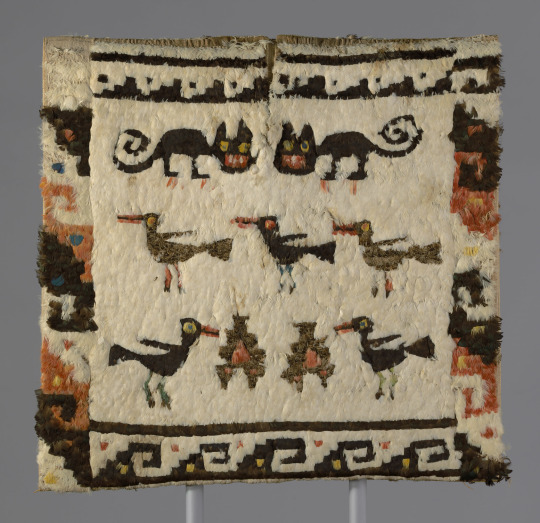#Chimú
Text

Flute with Incised Geometric Motif and Mouth in the Form of a Human Head
Chimú, Peru, 1200–1450
306 notes
·
View notes
Text



~ Ceremonial Knife (Tumi).
Culture: Chimú
Place of origin: Perú
Date: A.D. 1100–1470
Medium: Gold with turquoise inlay.
#12th century#15th century#history#museum#archaeology#arqueología#peruvian#peru#chimú#ceremonial knife#tumi#gold#turquoise#a.d. 1100#a.d. 1470
712 notes
·
View notes
Text
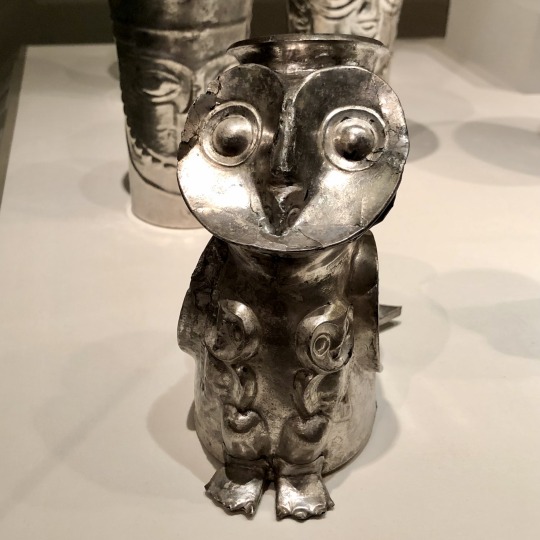
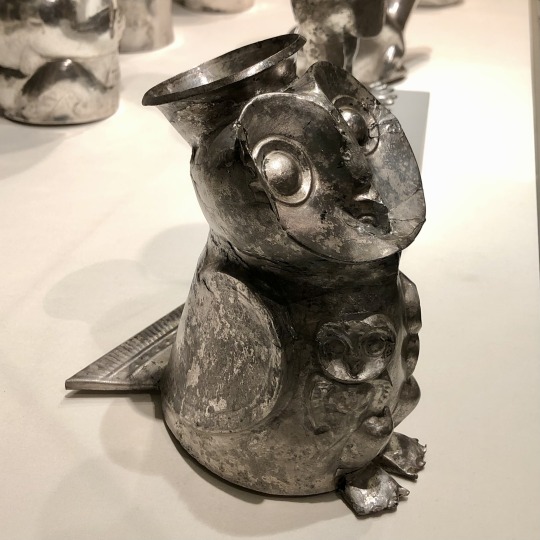
For #OwlishMonday here is a cute silver owl vessel (with two owlets!)
Title: Owl Vessel
Date: 14th–15th century
Geography: Peru
Culture: Chimú
Medium: Silver
Dimensions: H. 6 1/2 in. × W. 3 1/2 in. × D. 6 in. (16.5 × 8.9 × 15.2 cm)
[Metropolitan Museum of Art New York 1978.412.161]
#owl#owls#bird#birds#birds in art#metalwork#silver#Chimú#Peru#Peruvian art#South American art#Indigenous American art#Metropolitan Museum of Art New York#museum visit#Owilish Monday#animals in art
34 notes
·
View notes
Photo

This gold funerary costume from the Chimú capital Chan Chan in northern Peru is a highlight of the Museo Larco in the Pueblo Libre district of Lima, Perú.
7 notes
·
View notes
Photo

Feathered Crown
Date: 14th–15th century
Place of origin: Perú
Culture: Chimú
Medium: Feathers (Paradise Tanager, Macaw), cotton, skin, cane, copper
3 notes
·
View notes
Text
Finished my first attempt at embroidery. Based on a Chimú pattern obtained from the embedded post. It's here if you wan to try it yourself. It has the right amount of compleximity for me to want to try embroidering and not give up on it.

1 note
·
View note
Text
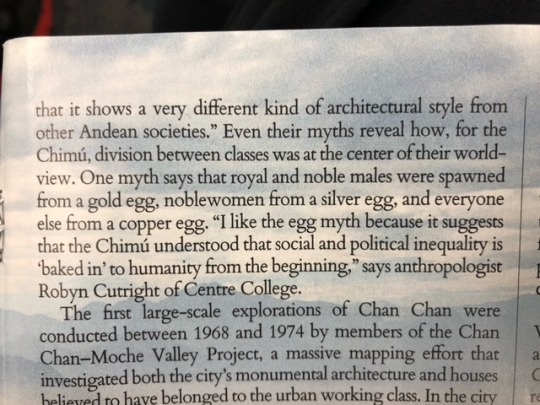
From a general-audience archaeology article.
The curious thing here is that the anthropologist seems to assume that social and political (incl gender) inequality was a 'fact of life' which a worldly and (apparently) resigned Chimú reflected in their legends, rather than a social structure which the powerful Chimú elites of Chan Chan either created or perpetuated (and it seems unthinkable that they originated the pattern of the legend referred to).
There is a reluctance, sometimes, to politically vilify an ancient culture, especially an indigenous one, this being itself a political sin; and yet the sociopolitical inequalities so roundly condemned in our time have to have come from somewhere ... it used to not even need saying that we had inherited them from the earliest times. But now, ancient times too, especially where they link to nonwestern and/or indigenous peoples, are politically untouchable, and so the timeless patriarchal and other stratified social prejudices seem to have emerged from nowhere, at no time ...
0 notes
Text
La región norte de Perú, hogar de la cultura preinca Chimú, ha producido otros 76 sacrificios de niños y en un grupo estaban dispuestos en círculo, con las cabezas casi tocándose.
0 notes
Text
When someone refers to Inca metalwork instead of Inca period metalwork I think they're stupid (99% sure Incas didn't make this, it was some artist they kidnapped)
That or they have worrying views about great vs. small nations 😬
#don't mean random posters but people who actually work with this stuff#some people just call it Chimú-Inca
6 notes
·
View notes
Text
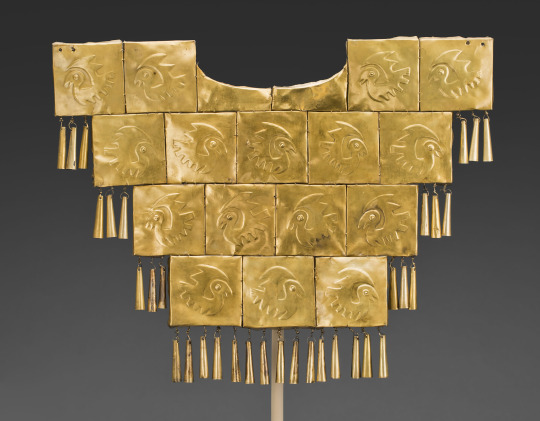
Breastplate
Chimú, 1000–1470 CE
91 notes
·
View notes
Text




Jill Pflugheber, Microscopy Specialist, and Dr. Steven White, Lewis Professor of Hispanic Studies (retired)
Trichocereus
Trichocereus pachanoi
Feldman’s research on the ritual use of “Wachuma,” the San Pedro cactus, establishes that Trichocereus pachanoi is one of the plants of power that is best represented in pre-Incan iconography, appearing in the art of a variety of indigenous cultures such as that of Chavín, Nazca, Moche, Paracas, and Chimú. The traditional use of this cactus, which contains significant amounts of mescaline, extends to northern Chile, northwestern Argentina, Bolivia, Peru and Ecuador. Even so, he says, the pre-Hispanic uses of the cactus (as a sacrament that facilitated communing with the divine spirits of nature) are still particularly well-conserved in northern Peru in the mountains of Piura (Huancabamba and Ayabaca), where the Complex of Las Huaringas Lagoons (a UNESCO World Heritage Centre) with its “paramo” ecosystem is located. Feldman analyzes the social function of San Pedro as a means of diagnosing illness and healing as well as conflict resolution or achieving prosperity in diverse forms. It is also employed in rituals for predicting the weather, doing astronomical observation, and extracting the mamayacu, (the mother of the sacred waters of the lakes). Feldman believes that the traditional use of San Pedro “represents a factor of social cohesion and regional cultural identity, while at the same time preserving a centuries-old religious system.”




Henri Michaux, Mescaline Paintings. 1950s
“I first took mescaline,” Michaux has said, “to see if I was capable of having luminous and colorful visions. I considered myself a kind of cripple: all my dreams and inner mental images are in dull grey.” But after a few minutes under the drug he decided that the search for luminous images was secondary to the possibilities of the drug for exploring the mind itself. “What immediately interested me,” he says, “was the rapport between the image and the idea, between the wish to see something and what one sees. In mescaline one finds an independent consciousness with its own world of images. One learns what it is both to have and not have a will.’’
#mescaline#hallucinations#art#henri michaux#Jill Pflugheber#microscopy#i'll never do that again#geez
125 notes
·
View notes
Text
For #GuineaPigAppreciationDay, here are two Chimú polychrome effigy vessels in the form of guinea pigs, North Coast Peru, 1100-1400 CE, now in the Museo de América Madrid collection. Both feature split-color black and white faces so there are three views of each.
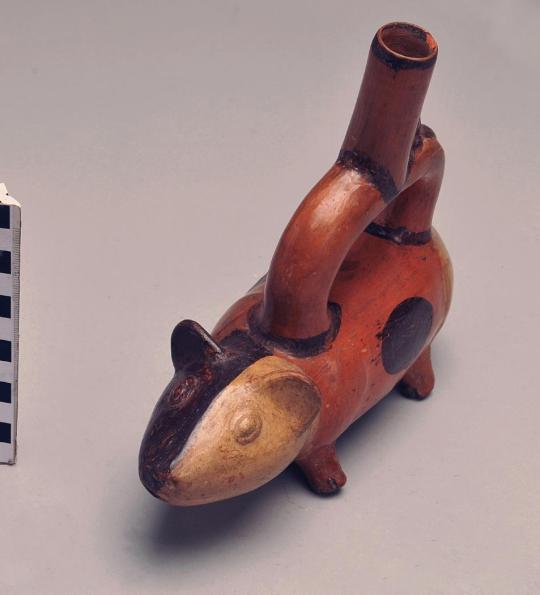

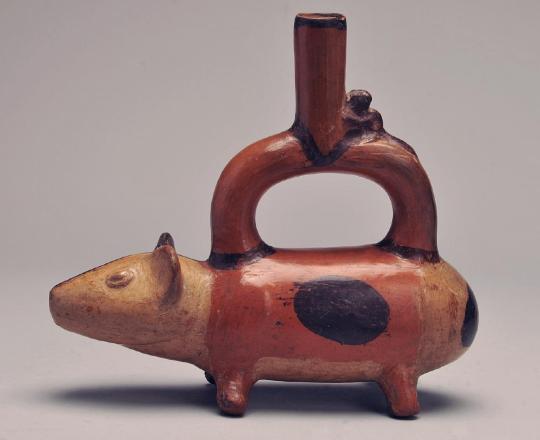
Inv. 10217 (3 views)
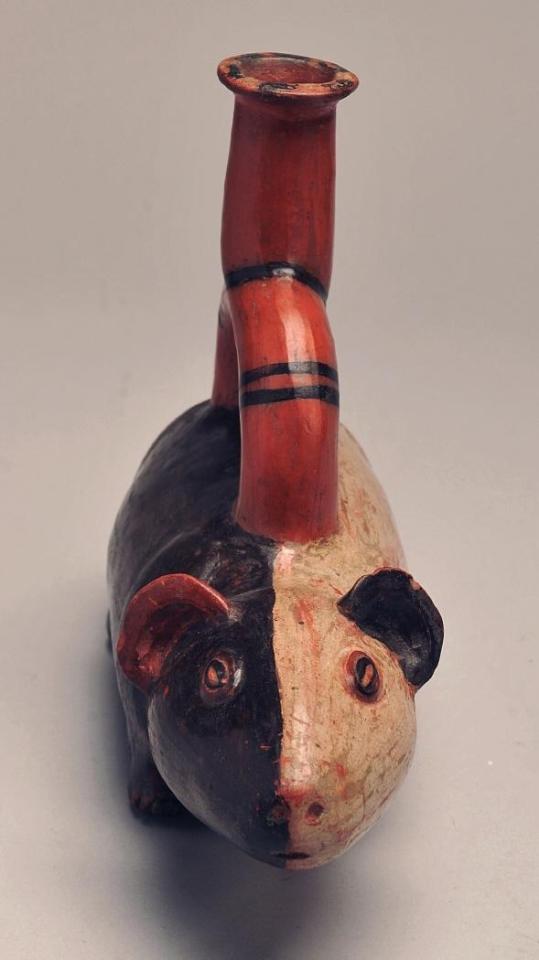

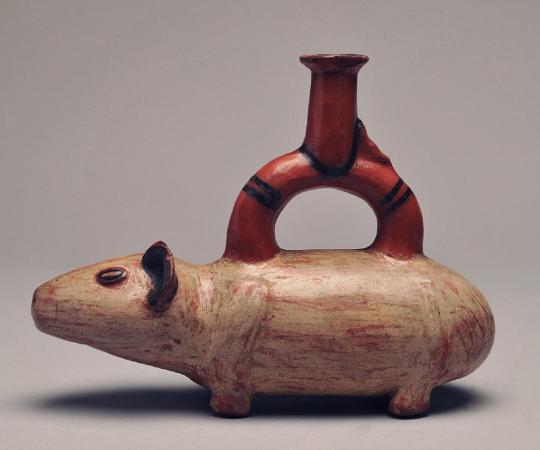
Inv. 10297 (3 views)
#Chimú art#Peruvian art#South American art#Indigenous art#animal holiday#Guinea Pig Appreciation Day#ceramics#effigy vessel#now in the Museo de América Madrid#polychrome#guinea pig#guinea pigs#cavy#cavies#animals in art#pre conquest art
428 notes
·
View notes
Text
EXPOSICIÓN FOTOGRÁFICA: INSTRUMENTOS PREHISPÁNICOS
“La fotografía ayuda a las personas a ver” - Berenice Abbott
En el Conservatorio Carlos Valderrama se realizó una exposición fotográfica de instrumentos históricos de la cultura peruana pertenecientes a la colección del ponente Teófilo Álvarez Álvarez, quien explicó las características de cada instrumento de viento, como flautas y trompetas.


Esta exposición, brindada por el profesor Álvarez, contó con la participación de alumnos del Conservatorio y de trujillanos, quienes estuvieron atentos a cada representación sonora que el ponente ofrecía.


Gracias a esta exposición, se pudo conocer más sobre la cultura peruana, especialmente la Mochica y la Chimú, y cómo los incas usaban tales instrumentos para comunicarse o anunciar hechos importantes.
Redacción: Sánchez Chuquimango Margarita
#university cesar vallejo#cience comunication#comunication#periodismo#blogmania#life quotes#original photographers#photography
21 notes
·
View notes
Text
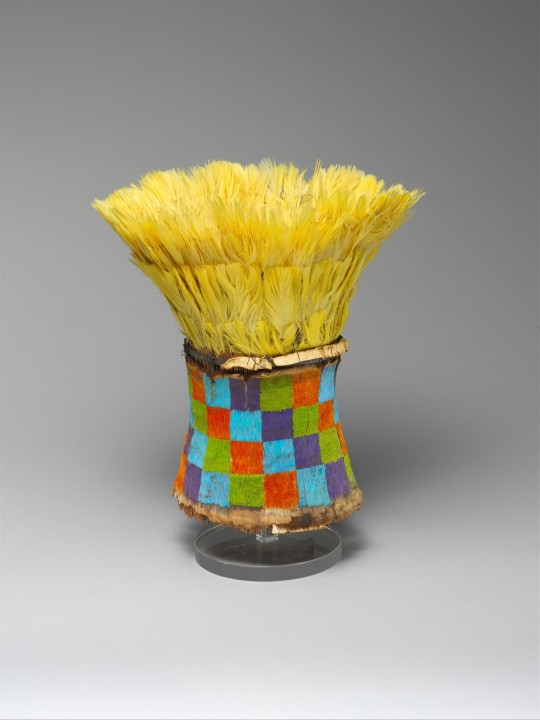
~ Feathered Crown.
Date: 14th–15th century
Place of origin: Perú
Culture: Chimú
Medium: Feathers (Paradise Tanager, Macaw), cotton, skin, cane, copper.
#history#museum#archeology#archaeology#latin america#peru#south america#peruvian#chimu#14th century#15th century#feathers#crown#feathered crown
223 notes
·
View notes

